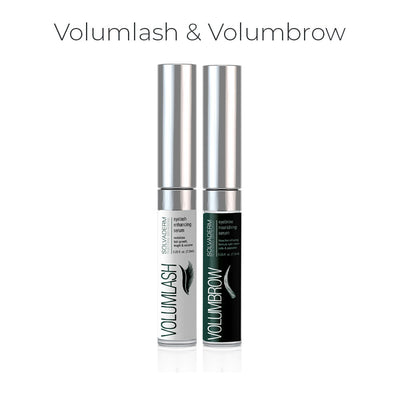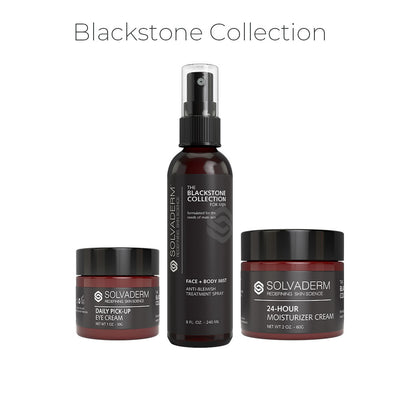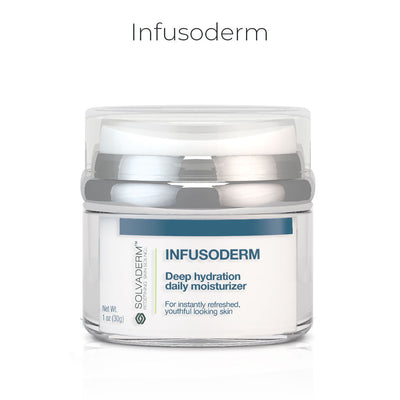The rise of social media has only perpetuated society’s fears about aging. Well-known social media personalities tout the different cosmetic procedures they’ve had. Some even do brand partnerships with Botox companies. Although transparency with cosmetic procedures helps prevent the relentless pursuit of unrealistic beauty standards, it can still provoke fear in others that they aren’t doing enough to reduce signs of aging.
There’s nothing wrong with choosing the route of more invasive cosmetic procedures. However, there are countless things you can do if you want to address signs of aging in a less invasive way. Striving for timeless beauty begins with understanding what aging is and what causes aging.
What Is Aging?
Aging is the gradual process of changes that accompany getting older. Aging involves different biological, physiological, and psychological changes.[1] Certain physiological functions deteriorate, specifically those related to survival and fertility.[2]
Some of the most common symptoms associated with aging include joint stiffness, loss of mobility, loss of muscle mass, memory loss, and poor eyesight. However, when people hear the term “aging,” they often think of signs associated with appearance, such as graying hair, wrinkles, and sagging skin.
Aging is a natural process that happens to everybody. Understanding the different types and causes of aging can help you address unwanted symptoms and prevent further deterioration.
Types of Aging
Multiple biological and biochemical phenomena give insight into why and how we age. The most common theories surrounding aging include four different types: cellular, hormonal, accumulative damage, and metabolic.
Cellular Aging: Your cells have a finite life span. They spend it dividing and multiplying to carry out certain functions encoded in their genetic material. However, a cell can only multiply so many times before the body starts inaccurately replicating its genetic material. To prevent the inaccurate copying of its genetic material, cells halt replication. A cell that no longer undergoes division is called a senescent cell. A senescent cell isn’t functional and serves no purpose to the body. When the number of non-functional, senescent cells in your body outnumbers healthy cells, signs of aging occur.[3]
Hormonal Aging: As you age, the production of various hormones diminishes. Menopause is associated with reduced production of estrogen and progesterone. Women often enter menopause between the ages of 44 and 55. Men can go through a period termed “andropause,” which involves the diminished production of anabolic hormones such as testosterone.[4]
Menopause, andropause, and other life stages associated with a decreased production of certain hormones all contribute to aging. Signs of hormonal aging include a decrease in muscle mass and strength, a change in bone density, low libido, a decrease in energy levels, cognitive impairment, dry skin, thinning of the skin, loss of skin elasticity, and hair fallout.
Accumulative Damage: Accumulative damage refers to aging that results from continued exposure to harmful environmental factors. These include toxins such as agricultural chemicals, ultraviolet radiation (UV) damage, unhealthy foods, excessive alcohol consumption, pollution, and heavy metals.[5]
Metabolic Aging: Metabolism refers to the sum of all biological and biochemical processes that occur in your body to sustain life. Metabolic processes produce natural by-products. Some of these by-products are beneficial, while others can be harmful and inflammatory if in excess.
As we get older, our metabolism can slow down. This means we aren’t able to break down food and nutrients properly. It also means building muscle and other proteins isn’t as efficient. As with all the different types of aging, certain things can influence your metabolic capabilities. These include diet, exercise, and exposure to environmental toxins, sleep hygiene, and stress. Certain types of fasting can be highly beneficial for improving metabolic changes that come with aging.[6]
Causes of Aging
Just as there are different types of aging, there are various causes. Most causes of aging involve the deterioration of cellular function.
Genomic Instability: This refers to when a cell's genetic material, or the genome, has many mutations. These mutations can be inherited through genetics or due to exposure to certain environmental toxins such as chemicals and radiation.[7] Genetic instability contributes to aging by compromising normal cell functions and damaging surrounding tissues and organs.
Telomere Attrition: In simpler terms, telomere attrition refers to the shortening of telomeres in your cells. Although the shortening of telomeres naturally occurs with each cell division, as you age, certain things can accelerate this process. A healthy diet and exercise can significantly prevent telomere attrition and the onset of many aging-related illnesses.[8]
Epigenetic Alterations: Epigenetic changes refer to instances in which your environment and lifestyle affect how your genes work. These epigenetic changes can be positive or negative. Epigenetic changes that result from chronic stress, poor diet, harmful lifestyle choices, and exposure to environmental toxins can accelerate aging and the deterioration of cell function.[9]
Luckily, research highlights specific interventions that can influence epigenetic changes to lengthen life span and positively impact age-related diseases. These interventions include caloric restriction, a healthy diet, stress reduction programs, physical activity, and pharmacological therapeutics.[10]
Loss of Proteostasis: This phenomenon is a signature sign of cellular aging. It refers to the misfolding of proteins in genetic material. These misfolded proteins can accumulate in aging cells and reduce a cell’s viability. Age-related diseases characterized by loss of proteostasis include Alzheimer's and other neurodegenerative disorders.[11]
Deregulated Nutrient Sensing: Our cells depend on multiple pathways to ensure they receive the right amount of nutrients to function optimally. As we age, these pathways don’t work as well due to various factors, such as oxidative stress and mitochondrial dysfunction. Oxidative stress can result from exposure to UV radiation, alcohol consumption, poor dietary choices, agricultural chemicals, chronic inflammation, and environmental pollutants.[12]
Mitochondrial Dysfunction: The mitochondria of healthy cells power the reactions occurring in the body by generating chemical energy in the form of adenosine triphosphate (ATP) molecules. As we age, certain factors can damage mitochondria, eventually leading to mitochondrial dysfunction and age-related diseases. Factors that increase mitochondrial dysfunction include excessive oxidative stress and the accumulation of mitochondrial DNA mutations.[13]
Cellular Senescence: As described in a previous section, senescence happens when a cell halts its normal replication to prevent the inaccurate copying of genetic material and damage to surrounding organs and tissues. A healthy body can get rid of these non-functional senescent cells. However, with age, functions of the immune system decline and can lead to their accumulation.
When the number of senescent cells outnumbers healthy cells, it can negatively affect an individual’s ability to withstand stress and illness. Senescent cells that aren’t properly cleared from the body can also contribute to cognitive dysfunction and various age-related diseases.
Stem-Cell Exhaustion: In the human body, stem cells are the only cells that can self-renew and differentiate into special types depending on where the body needs them. For example, a stem cell can differentiate into blood, brain, muscle, bone, and heart cells.[14]
As the body ages, it can become deficient in stem cells. This negatively impacts tissue homeostasis and the body’s ability to heal and regenerate following injury.[15] Stem-cell exhaustion can exacerbate hallmark signs of aging, such as immunosuppression, muscle loss, changes in bone mass and density, and sagging skin.
Common Signs of Aging
Understanding the causes of aging is the first step to reversing and preventing signs of it. Identifying common signs of aging is the next step so you know what to address.
Some of the most common signs of aging in the skin include crow’s feet, wrinkles around the eyes, age spots, laugh lines, droopy eyelids, decollete wrinkles, frown lines, forehead wrinkles, loose skin on the cheeks, and crepey skin.
Dynamic facial muscle movement can contribute to crow’s feet, wrinkles around the eyes, laugh lines, frown lines, and forehead wrinkles. Facial muscle movement is a natural byproduct of expressing our emotions; your eyes squint when you smile, your mouth widens when you laugh, and your forehead wrinkles when you raise your eyebrows in astonishment.
Age spots are often a result of excessive sun exposure. UV radiation from the sun increases melanin production. Continuous exposure to the sun can lead to the clumping of this melanin pigment, which appears as age spots.[16]
Droopy eyelids form due to the loss of tissue strength and elasticity that comes with aging. The skin around your eyes is the thinnest on your face. This means it is more susceptible to injury, the effects of UV radiation, and frequent rubbing of the eyelids.[17]
Decollete wrinkles, sagging skin, and crepey skin can all be caused by reduced tissue integrity, loss of hyaluronic acid content, and diminished collagen production. Dermatologists estimate that your skin’s collagen content decreases by about 1% each year starting in the mid-twenties.[18]
It’s usually a combination of things that contribute to signs of aging. The good news is science has revealed a multitude of interventions that can help you restore the integrity of your skin and reduce aging.
Best Ways to Reduce Aging
The best place to start when it comes to reducing aging is avoiding the things that accelerate it and replacing them with interventions that prevent it.
Exercise: Research[19] continues to come to light regarding the anti-aging effects of exercise. Staying active as you age can prevent loss of muscle mass, increase bone density, improve cardiovascular health, prevent frailty, stimulate mitochondrial biogenesis, and improve cognitive function.
Exercising can even improve skin health. A study[20] showed that both aerobic and resistance exercise improved skin elasticity, dermal structure, and skin thickness.
Proper Skincare Routine: Adopting a good skincare routine can do wonders for preventing and reversing signs of aging. You don’t need a drawer full of products to rejuvenate your skin. You can simply start with a cleanser, serum, moisturizer, and skin-brightening cream.
It’s important not to overly strip mature skin of its natural oils. That’s why the Rejuvoderm Clarifying Cleanser is one of our top picks. It deeply cleanses the skin without over-drying. It features gentle exfoliating acids that remove dead skin cells and improve elasticity and firmness.
There are hundreds of anti-aging serums on the market today. How do you know which one is best for you? You should stick with a serum that is backed by science and has proven success with customers. The Replexagen Growth Factor Serum meets these standards. This serum was formulated based on cutting-edge science to revitalize your skin’s appearance and provide long-term protection against what causes aging. This serum features several growth factors proven to enhance moisture levels, fortify the skin structure, slow signs of aging in the skin, and promote the generation of new healthy skin cells.
It’s recommended to seal all of the benefits of your skincare products with a high-quality moisturizer. The Suvoderm Anti-Wrinkle Night Cream contains moisturizing factors and skin-brightening botanicals. It features several highly researched anti-aging ingredients like retinol, hyaluronic acid, vitamin E, and Ubiquinone (COQ10). Its wrinkle-reducing and antioxidant power complement the other products mentioned above.
You could see drastic changes in your skin by adopting a simple skincare routine using the products mentioned above. However, if you want more support for your mature skin, add the Stemuderm Anti-Wrinkle Dermatological Treatment. This anti-aging cream reduces fine lines and wrinkles, plumps the skin, promotes collagen production, and deeply hydrates the skin. Based on the overwhelming positive customer feedback, you could experience a drastic reduction in the appearance of your wrinkles in as little as four weeks.
Eat A Healthy Diet: As mentioned in earlier sections, your dietary choices can heavily influence the aging process. Excessive sugar intake and consumption of highly processed foods can contribute to metabolic dysfunction and the production of oxidative stress.
By adopting a healthier diet filled with phytonutrients, you can reverse and prevent causes of aging. Important skin-supporting nutrients include zinc, copper, iron, selenium, vitamin A, vitamin C, vitamin D, and Vitamin E.[21]
Avoid Smoking: When it comes to identifying what causes aging, smoking is a top contributor. Due to the production of reactive oxygen species (ROS) and matrix metalloproteinases (MMPs), smoking can accelerate skin aging.[22] By saying no to smoking and other tobacco products, you also say no to premature wrinkling.
Reduce Stress: Reducing your stress levels, such as practicing meditation, can profoundly affect reversing and preventing aging. Multiple studies have shown that meditation and other stress reduction techniques can improve cellular aging by preserving telomere length.[23]
Stay Hydrated: Proper hydration is essential for preventing signs of aging in the skin. Research shows that high water intake can positively impact skin physiology.[24]
Drink Less Alcohol: Like smoking, excessive alcohol consumption heavily contributes to signs of aging. In one research study[25], frequent alcohol consumption is associated with shorter telomere length.
Prioritize Your Sleep: Adequate sleep allows your body to rest and repair. Research[26] shows chronic poor sleep habits may accelerate aging by contributing to telomere loss and cell senescence.
Some tips to get great shut-eye include sleeping in a dark and cool room, avoiding screen time one hour before bed, incorporating a stress reduction technique, and avoiding caffeine or other stimulants past noon.
Aging Differences Between Men and Women
The question “What causes aging?” usually has the same answers for both men and women. Many external and lifestyle factors contribute to signs of aging in both sexes. These include poor dietary choices, lack of exercise, chronic stress, poor sleep habits, excessive alcohol consumption, UV radiation, and exposure to environmental toxins.
However, due to certain sex hormones, there are a few differences in how men and women age. Although they also need testosterone, the two main sex hormones at play for women include estrogen and progesterone. As women age, production of these hormones begins to diminish, ultimately resulting in the stage of life known as menopause.
Low estrogen during menopause can lead to symptoms such as dry skin, hair loss, weak bones, poor focus and concentration, mood swings, vaginal dryness, loss of libido, and fatigue.[27] Compared to men, women lose collagen more quickly following menopause and may experience more frailty during the aging process.
The primary sex hormone at play for men is testosterone. Like the female sex hormones, testosterone declines with age. Symptoms of declining testosterone include erectile dysfunction, loss of strength and muscle mass, cognitive dysfunction, and depression.[28]
We need more research on the aging differences between men and women. Some scientists speculate the current lack of evidence could be due to long-standing male-biased research sampling in clinical studies.[29]
Frequently Asked Questions
You can refer to the sections below to find answers to commonly asked questions regarding aging.
Is Aging Skin Permanent?
Although some skin damage is irreversible, not all signs of aging are permanent. For example, topical products, cosmetic procedures, and novel stem cell therapies can all help with wrinkles, fine lines, hyperpigmentation, volume loss, and crepey skin.
At What Age Do Men Start Aging?
Men’s testosterone levels begin to decline by one percent every year starting in their thirties.[30] Changes that can accompany the decline in testosterone include low libido, loss of strength and muscle mass, fatigue, and hair loss. However, certain environmental and lifestyle factors can accelerate the testosterone decline. These things include poor diet, alcohol consumption, smoking, stress, lack of physical activity, and exposure to endocrine-disrupting chemicals (EDCs).
What Causes You to Age Faster?
The most notable things that accelerate aging are poor diet, excessive sugar intake, alcohol consumption, smoking, chronic stress, poor sleep habits, UV radiation, lack of exercise, and exposure to environmental toxins. You can review the more in-depth answer to this question under the “Causes of Aging” section at the beginning of the article.
What Is the Main Cause of Aging?
There isn’t necessarily one “main” cause of aging. As mentioned above, the most common causes of aging include genomic instability, telomere attrition, epigenetic alterations, loss of proteostasis, deregulated nutrient sensing, mitochondrial dysfunction, cellular senescence, and stem-cell exhaustion. You can review the “Causes of Aging” section for more insight into what accelerates aging.
Conclusion
Before you scroll through videos about the hottest “anti-aging” products and trends, it’s important to know the answer to the question, “What is aging?”. Aging involves complex biological, biochemical, and psychological changes. Knowing this answer can help inform your choices surrounding what trends and products to try.
Although some aspects of aging are inevitable, the process isn’t something to be feared. You have much more control over what causes aging than you think. Science has brought forth incredible ways to prevent and reverse signs of aging so you can live a long and healthy life. Some of this science is especially helpful for targeting aging skin.
Do your body well and consider implementing some of the ways to reduce signs of aging, such as prioritizing a healthy diet, incorporating stress reduction techniques, saying no to alcohol and smoking, and adopting a proper skincare routine. You can refer back to the “Best Ways to Reduce Aging” section to check out our top skincare picks and give your skin a boost while aging gracefully.
References
1] ↑https://www.nia.nih.gov/about/aging-strategic-directions-research/understanding-dynamics-aging
2] ↑https://www.ncbi.nlm.nih.gov/books/NBK10041/
3] ↑https://www.nia.nih.gov/news/does-cellular-senescence-hold-secrets-healthier-aging
4] ↑https://www.ncbi.nlm.nih.gov/pmc/articles/PMC8020896/
5] ↑https://www.ncbi.nlm.nih.gov/pmc/articles/PMC7732411/
6] ↑https://www.ncbi.nlm.nih.gov/pmc/articles/PMC9374375/
7] ↑https://www.ncbi.nlm.nih.gov/pmc/articles/PMC4565613/
8] ↑https://www.ncbi.nlm.nih.gov/pmc/articles/PMC3370421/
9] ↑https://www.ncbi.nlm.nih.gov/pmc/articles/PMC4966880/
10] ↑https://link.springer.com/article/10.1007/s42844-020-00015-5#citeas
11] ↑https://www.ncbi.nlm.nih.gov/pmc/articles/PMC3101847/
12] ↑https://www.ncbi.nlm.nih.gov/pmc/articles/PMC4313349/
13] ↑https://www.sciencedirect.com/science/article/pii/S0925443916302927
14] ↑https://my.clevelandclinic.org/health/body/24892-stem-cells
15] ↑https://academic.oup.com/stcltm/article/11/3/231/6550634
16] ↑https://www.mayoclinic.org/diseases-conditions/age-spots/symptoms-causes/syc-20355859
17] ↑https://health.clevelandclinic.org/the-best-options-for-droopy-eyelids-circles-and-sags/
18] ↑https://www.uclahealth.org/news/should-you-take-collagen-supplements
19] ↑https://www.ncbi.nlm.nih.gov/pmc/articles/PMC4340807/
20] ↑https://www.nature.com/articles/s41598-023-37207-9
21] ↑https://www.ncbi.nlm.nih.gov/pmc/articles/PMC7146365/
22] ↑https://pubmed.ncbi.nlm.nih.gov/17951030/
23] ↑https://www.ncbi.nlm.nih.gov/pmc/articles/PMC5447722/
24] ↑https://pubmed.ncbi.nlm.nih.gov/26345226/
25] ↑https://www.nature.com/articles/s41380-022-01690-9
26] ↑https://www.ncbi.nlm.nih.gov/pmc/articles/PMC8658028/
27] ↑https://my.clevelandclinic.org/health/diseases/22354-low-estrogen
28] ↑https://www.ncbi.nlm.nih.gov/pmc/articles/PMC1502317/
29] ↑https://elifesciences.org/articles/63425
30] ↑https://health.clevelandclinic.org/declining-testosterone-levels/










